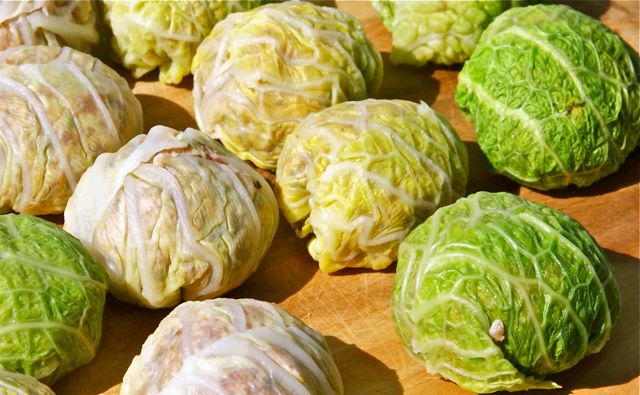
To say I love Holly Smith and the food she serves at Café Juanita in Kirkland would be a gross understatement. I met Holly a few years ago when a friend “bought” her at the Seattle Men’s Chorus Auction, and invited us to his home to share a multi-course, wine-paired dinner she hosted with some of her staff from the restaurant. It didn't hurt that she was totally down with our snarky banter and was willing to go with the bitchy flow in the room! The food completely blew my mind—so much that for birthdays and celebrations, when David asks, “Where would you like to go” the answer is an unwavering, “Café Juanita”. (If you go, eat her signature dish…..the rabbit will completely change your life. When in doubt, Eat The Bunny Eat The Bunny Eat The Bunny. She also makes a foie dish that will make you weep with joy).
Because I am her biggest stalker fan, I often search the net for her recipes I can try at home. I ran across this risotto recipe and made it this weekend. It Blew. Our. Minds. The sweetness of the grapes and the tangy cheese are incredible together. Don’t be daunted by trying to procure the cheese. In Seattle, you can get it at PFI for about 10 bucks. Otherwise, if you have a good cheesemonger you should be able to hunt it down.
David proclaimed this to be the best risotto I’ve ever made at home, and I have to agree.
What’s your favorite risotto recipe?
Roasted Grape Risotto with Hazelnuts and La Tur Cheese
Recipe from Holly Smith, Chef/Owner of Cafe Juanita
Serves 6
Ingredients
Roasted Grapes:
•1 bag seedless red Grapes from California
•>1/4 cup fennel seed
•1/2 teaspoon chile flakes
•1 tablespoon thyme
•1 teaspoon salt
•1/4 cup olive oil
 Directions
Directions
Mix all ingredients together. Roast at 400 degrees F until soft and caramelized golden. Take out and leave at room temperature.
Roasted Hazelnuts:
•1 cup hazelnuts roughly chopped
In a 350 degrees F degree oven, roast hazelnuts until lightly browned, for approximately 6 to 8 minutes. Let cool. Reserve for later.
Risotto:
•2 1/2 cups Carnaroli rice (Arborio is acceptable substitution)
•7 to 8 cups chicken stock (vegetable stock may be used as well)
•2 medium yellow onions, finely diced
•1 pound unsalted Plugra butter at room temperature
•8 shallots finely minced
•1/2 cup verjus
•1 1/2 wheels of La Tur Cheese
•1 cup roasted hazelnuts (recipe above)
•Roasted grapes (recipe above)
Melt 4 ounces of butter in a heavy-bottomed pan. Add diced onions and shallots and cook over medium to high heat, stirring until uniformly caramelized. While the onions are cooking, bring the stock up to a simmer in a separate pot. It is always best to add hot stock to your risotto. Add the rice to the onions and stir. Coat all kernels well. Add the verjus and stir. Add 4 cups of hot stock and stir well. Turn the heat down to medium. When the rice has absorbed most of stock, begin adding 1/2 cup more at a time. Stir every minute or two until the stock is absorbed. Continue until about 7 cups total have been added to the rice. Taste and add more stock if not cooked through. When rice is just done and still very moist, turn off the heat and let rest for 2 minutes off the burner.
Divide the remaining butter into three portions. Add one portion at a time into the risotto, beating with a wooden spoon until well incorporated. Add one-half wheel of the La Tur cheese and stir vigorously. Fold in the roasted grapes and stir gently. With the remaining wheel of the La Tur, divide into 6 sections and roll in the reserved roasted hazelnuts. Divide and plate the grape risotto onto six plates. Garnish each with hazelnut La Tur cheese.


